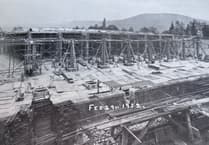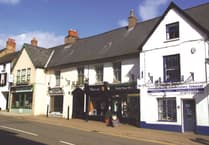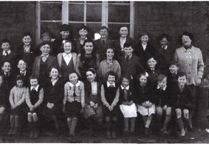THE staging of the National Eisteddfod in Abergavenny was not just ‘a happy week’ but a profitable one too, according to the executive chair of the National Eisteddfod Council.
The Council discussed the success of the Monmouthshire and District festival on Thursday (November 24), hearing that the event left a surplus of over £6,000.
Presenting his final report to the Council in Aberystwyth, Frank Olding said it had been a great pleasure to welcome the rest of Wales to Monmouthshire and he was delighted that so many people enjoyed what the county and the Eisteddfod had to offer.
“It was a special Eisteddfod, a happy week and a period that neither I nor the busy team of volunteers who worked so hard for the past two years will ever forget. We were given the challenge to prepare, organise and host the Eisteddfod and that is what we did, enthusiastically and full of good humour,” he said.
“This year we had the chance to showcase our county to the whole of Wales, and we proved that we could host a successful and flourishing Eisteddfod in an area less traditionally associated with the Welsh language.
“I am also delighted to announce that the Eisteddfod was a financial success. Yes, it was a risk to bring the festival to Abergavenny, and area which had not hosted the Eisteddfod for more than a century, but we had fantastic support both from Welsh and non Welsh speakers, with everyone keen to ensure the success of the week. We thank everyone for their support.
“A good relationship with the local council is vitally important to the success of the Eisteddfod, and this was certainly true with Monmouthshire County Council, which decided from the start that the Eisteddfod would be a great success.
“We thank them for their co-operation and vision throughout our journey, from the first discussions over a decade ago until the very end of the project. Their support with the fundraising work, ensuring that we reached the Local Fund target was a great boost to the work this year.”
He added, “It was great to see so many local faces on the Maes during the week, with many people returning on the final weekend. The legacy has already begun, with a great surge in the demand for Welsh lessons, and I very much hope this will continue to increase over the next few years.”
He said more than 140,000 people had visited the Castle Meadows site ‘and everyone loved the slightly quirky Maes, full of hidden corners revealed as the week wore on’.
The fact that visitors had to explore the Maes to see everything, added to the site’s appeal.
“Today is a chance for us to thank everyone who was part of the Eisteddfod, our visitors, local residents, competitors, stallholders, and the many volunteers who joined us during the week, as well as our partners, sponsors and generous supporters.
“But my greatest thanks go to the team who worked with me throughout the community project and the festival itself.
“We may have been a small team, but we were a very close and effective unit, bursting with enthusiastic ideas about events and activities, everyone keen to show our special county at its very best.
“I believe we managed to do this, and we shared the area with visitors of all ages from the whole of Wales and beyond, during a happy week, which will stay with us for ever.”
The Council meeting was also an opportunity to discuss elements of the Eisteddfod in detail, as part of the annual evaluation process, looking at the community project and festival.
Among the issues covered in the report were fundraising and sponsorship, competitions, the new pavilion and concerts, the Maes and the caravan site, Maes B, volunteering, communications and tickets.
You can download a copy of the report from the Eisteddfod website: eisteddfod.wales.





Comments
This article has no comments yet. Be the first to leave a comment.